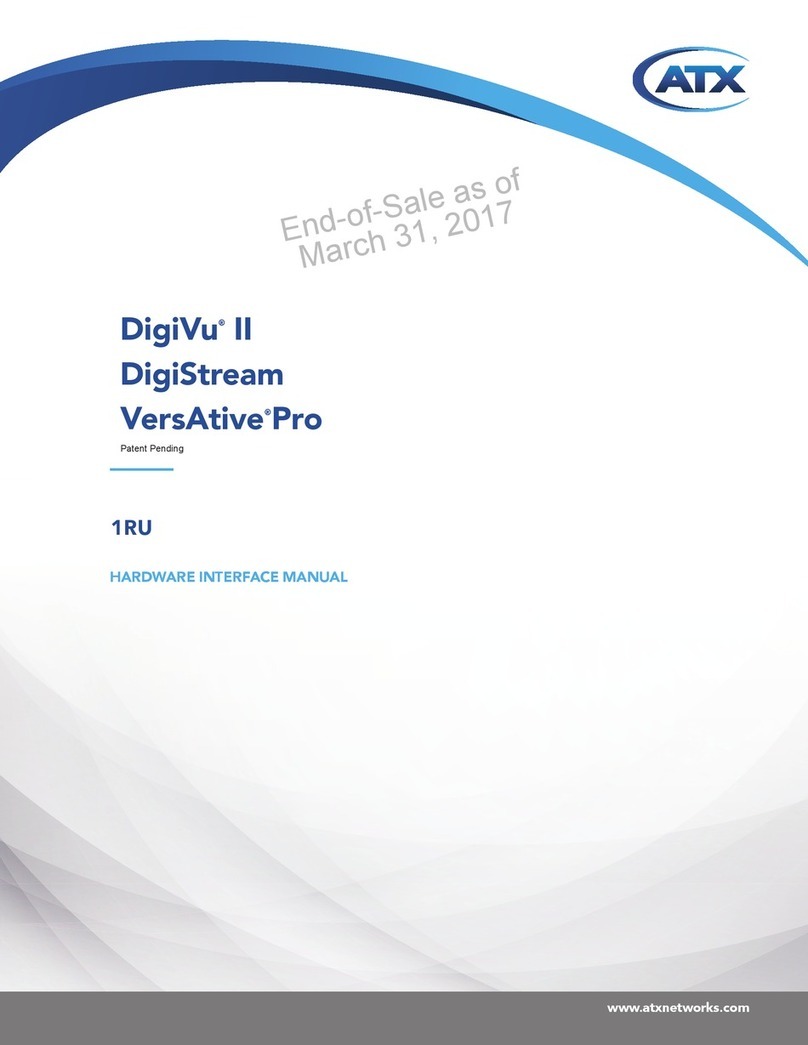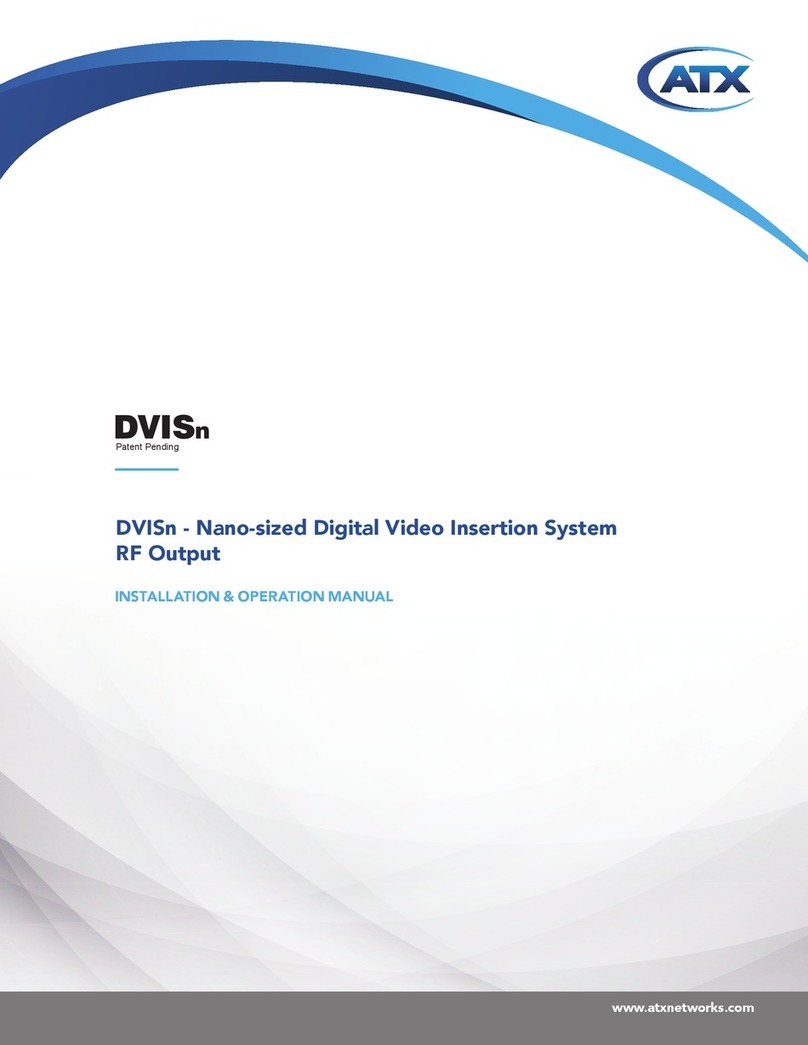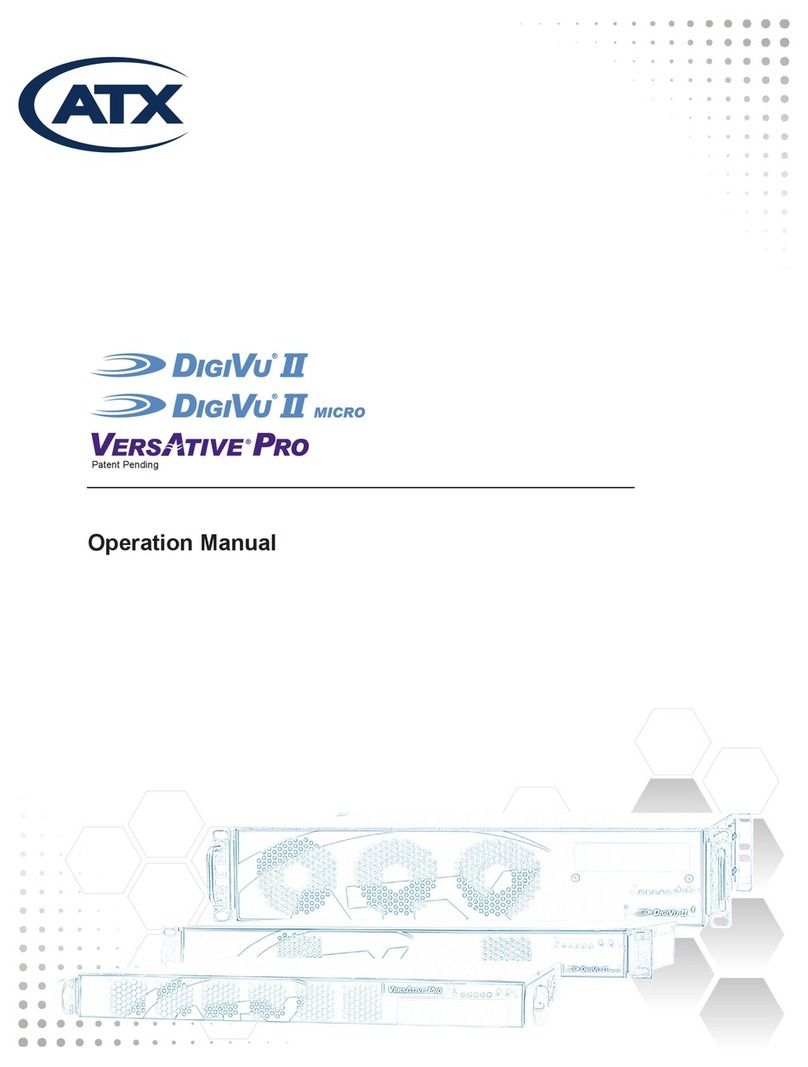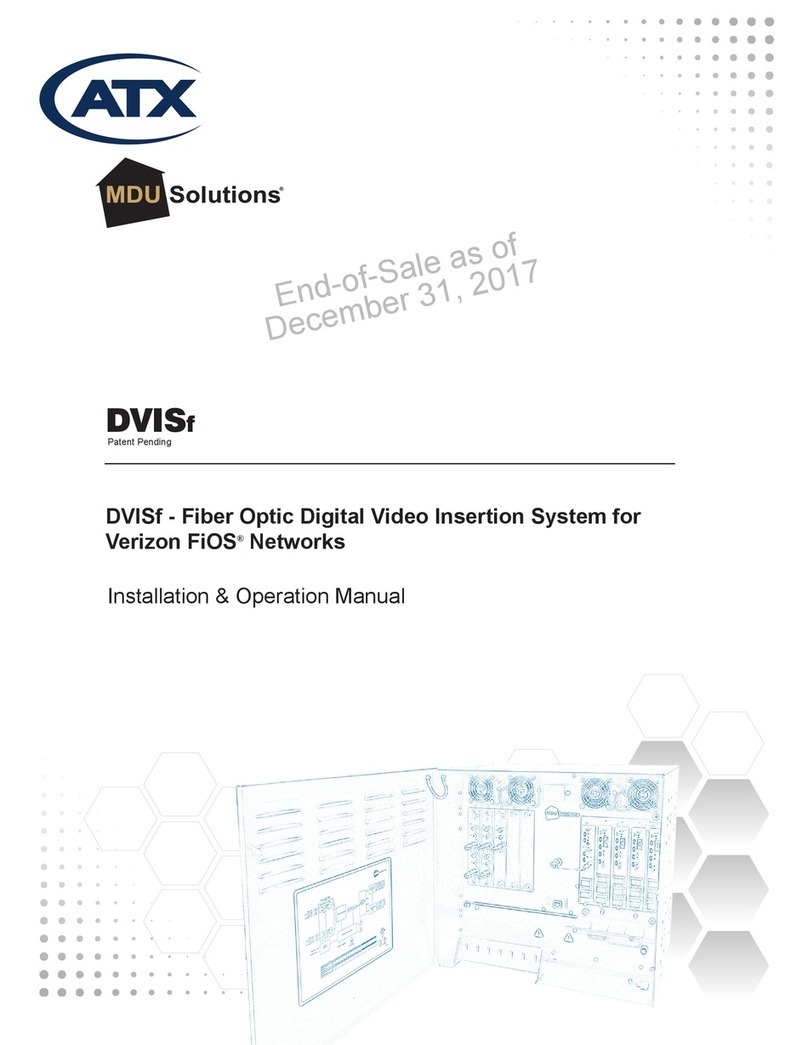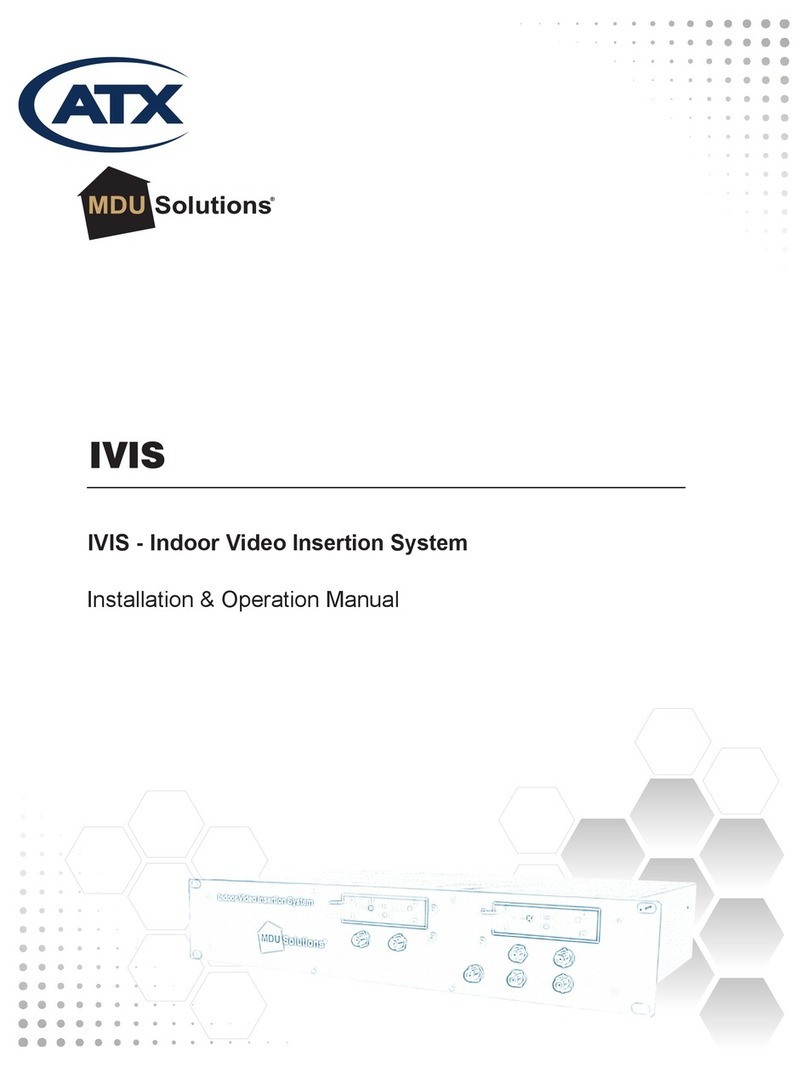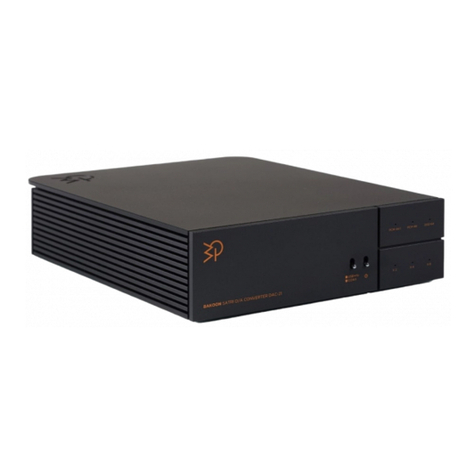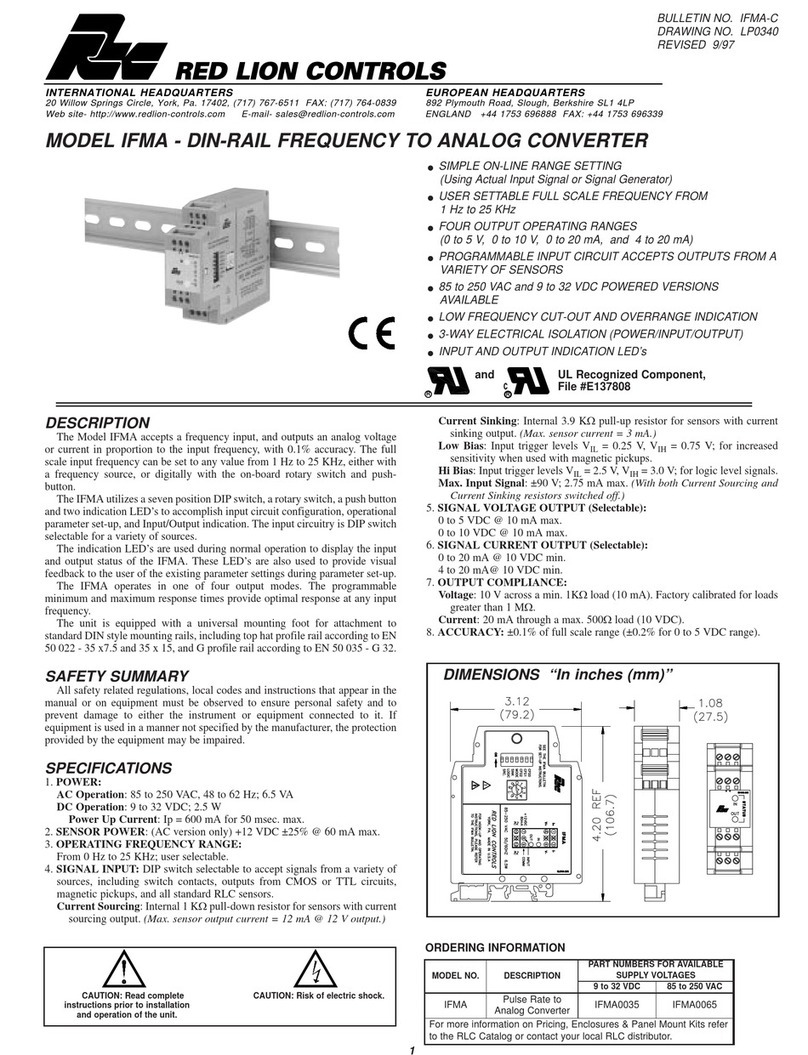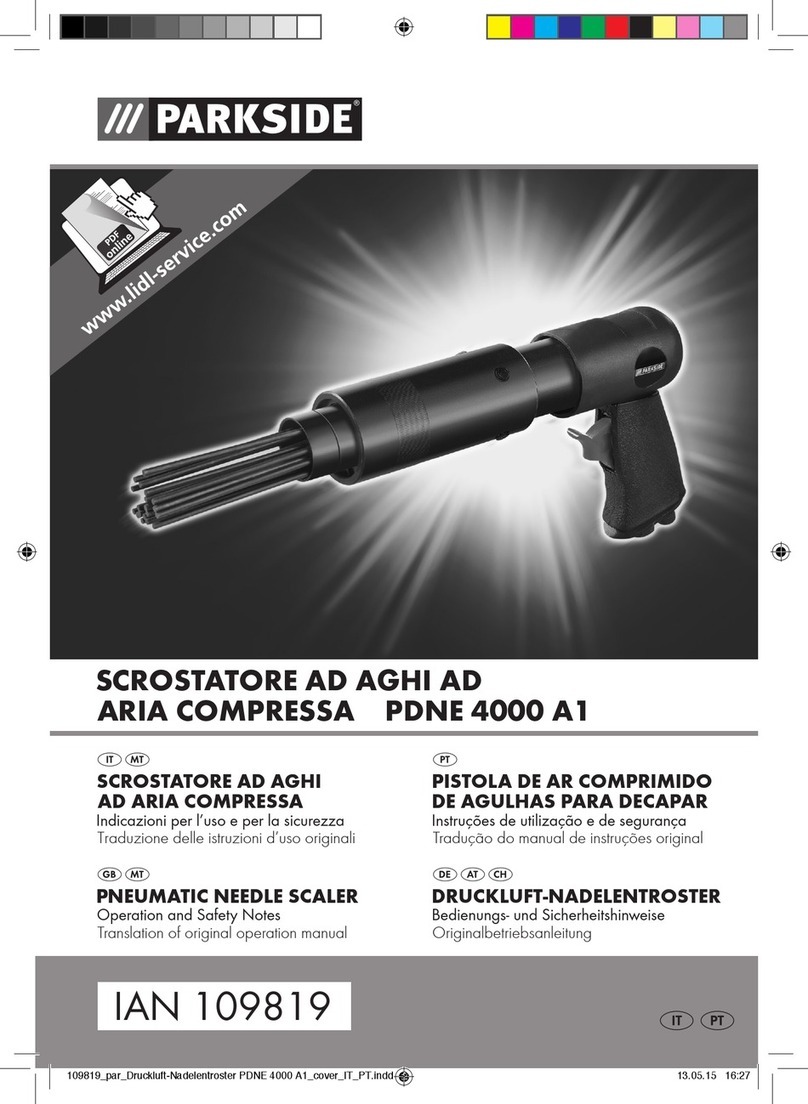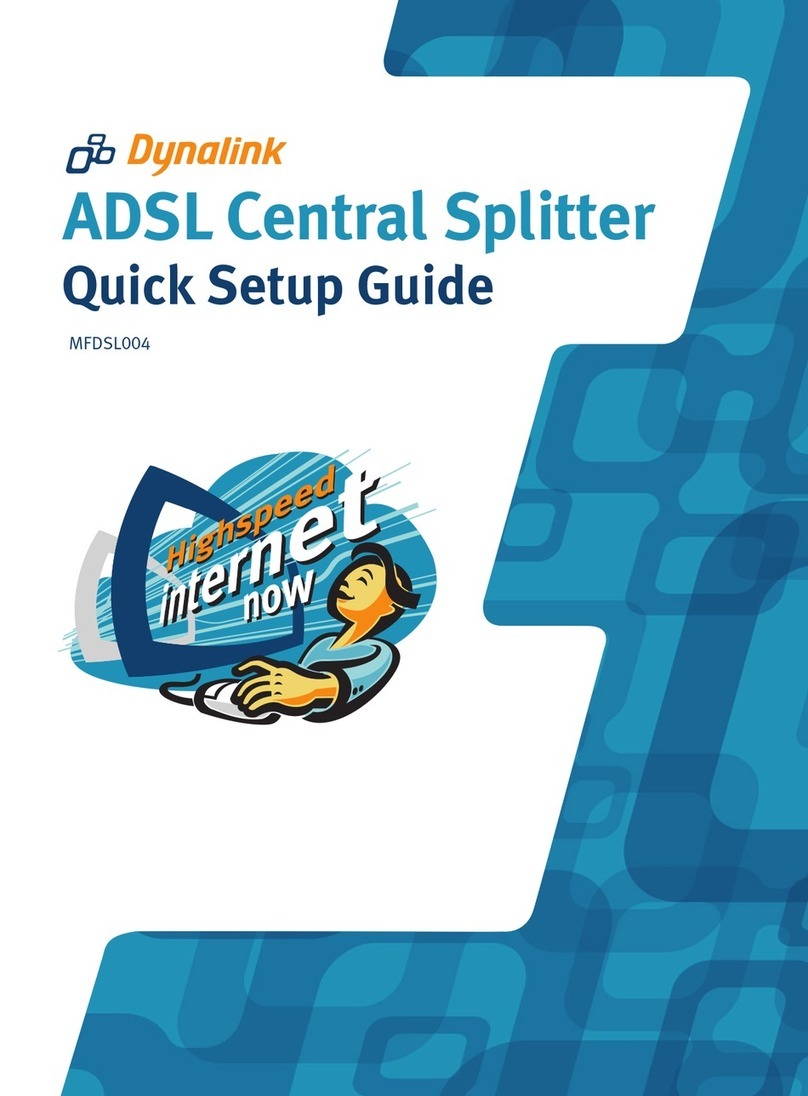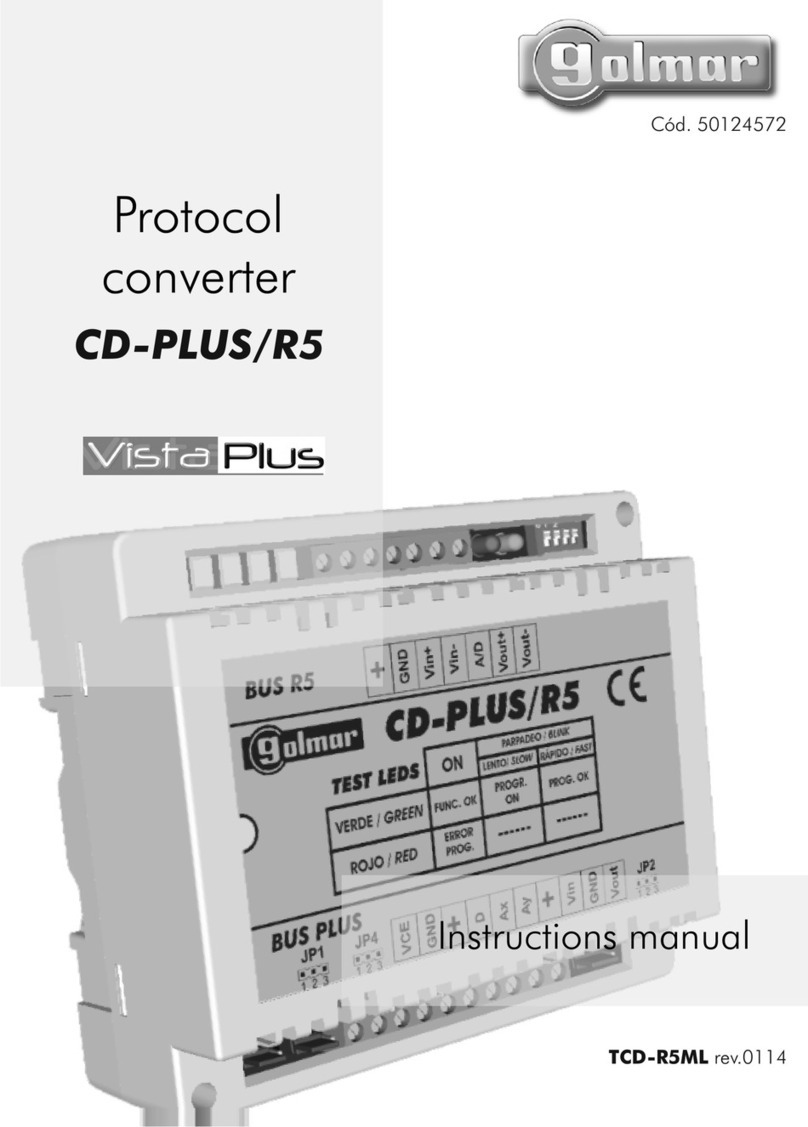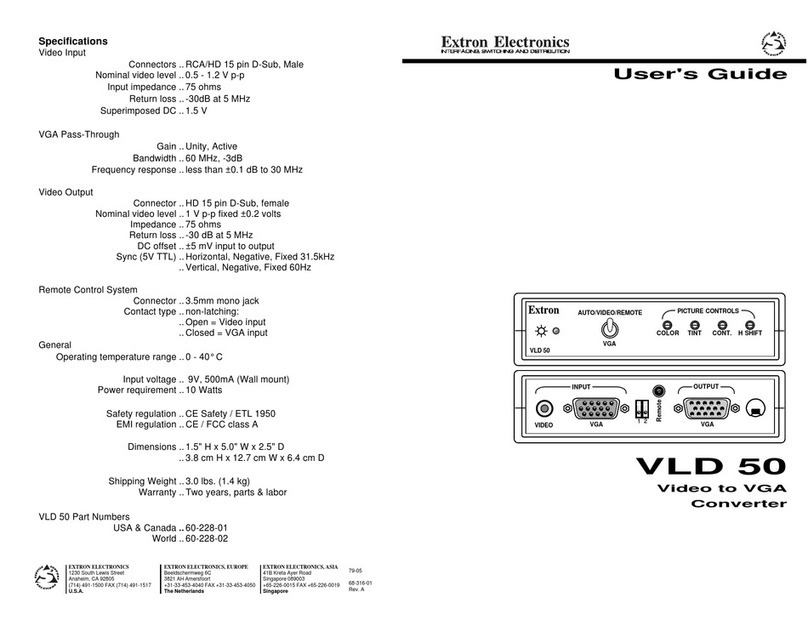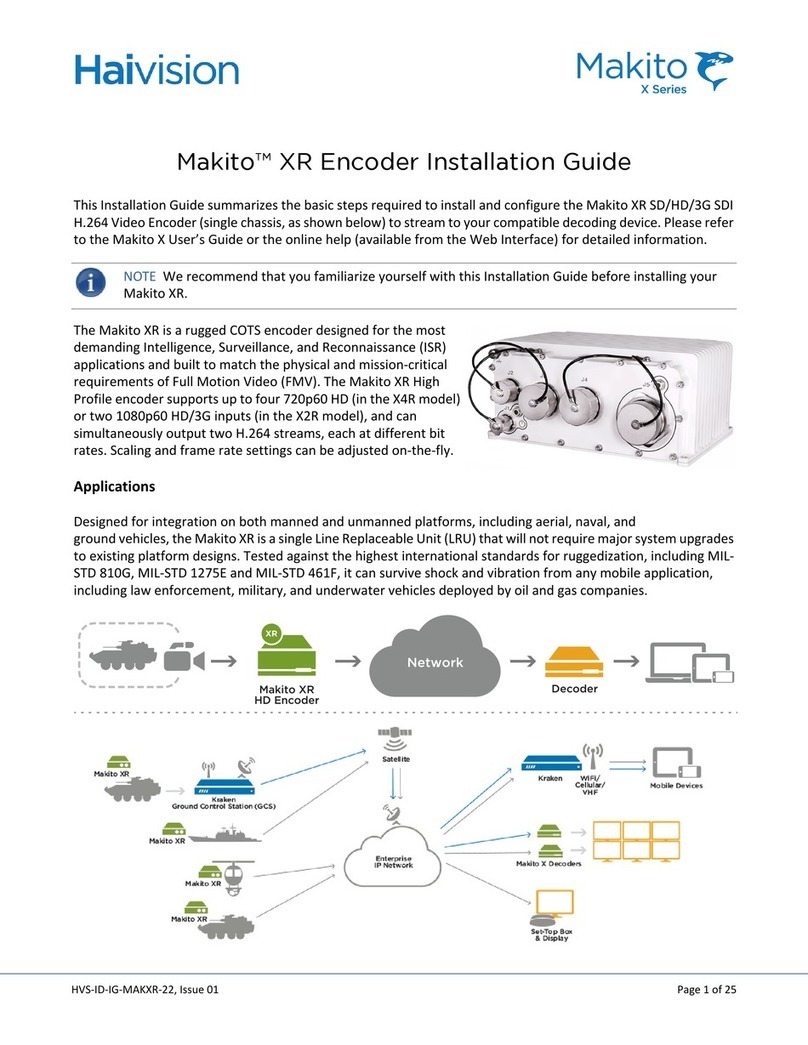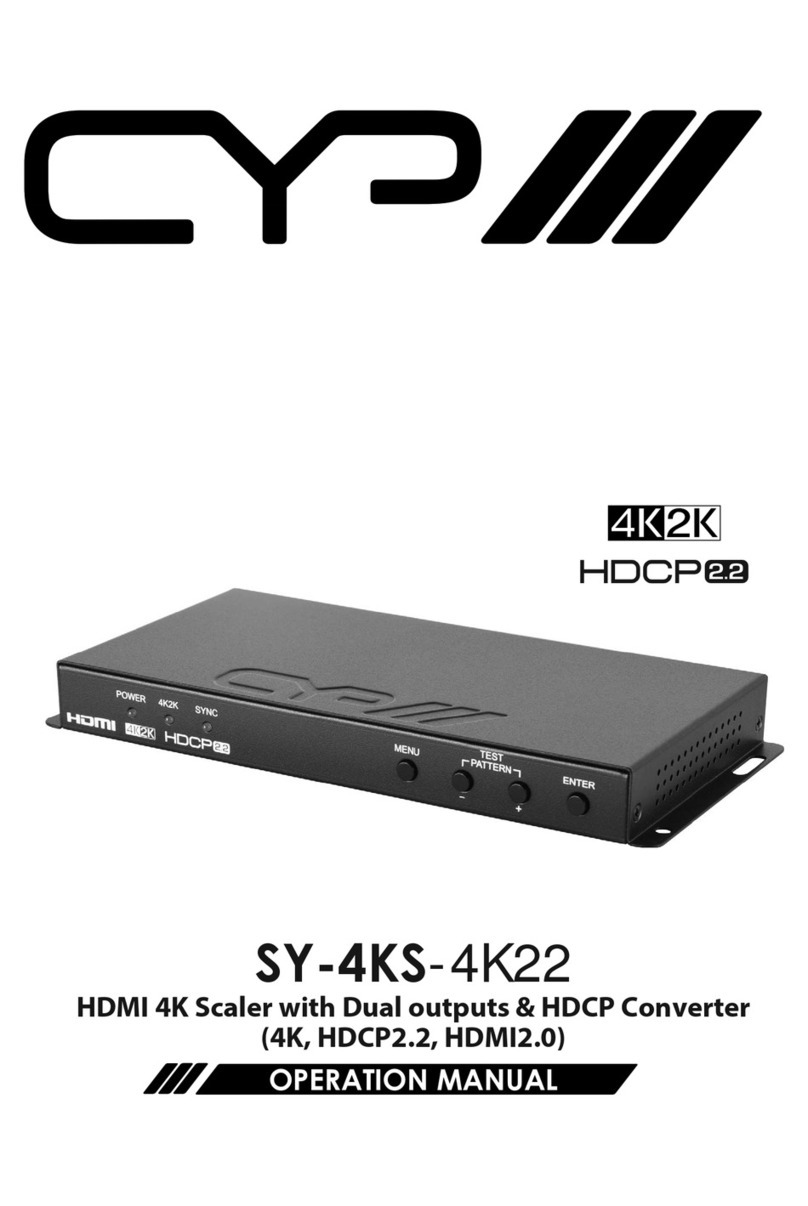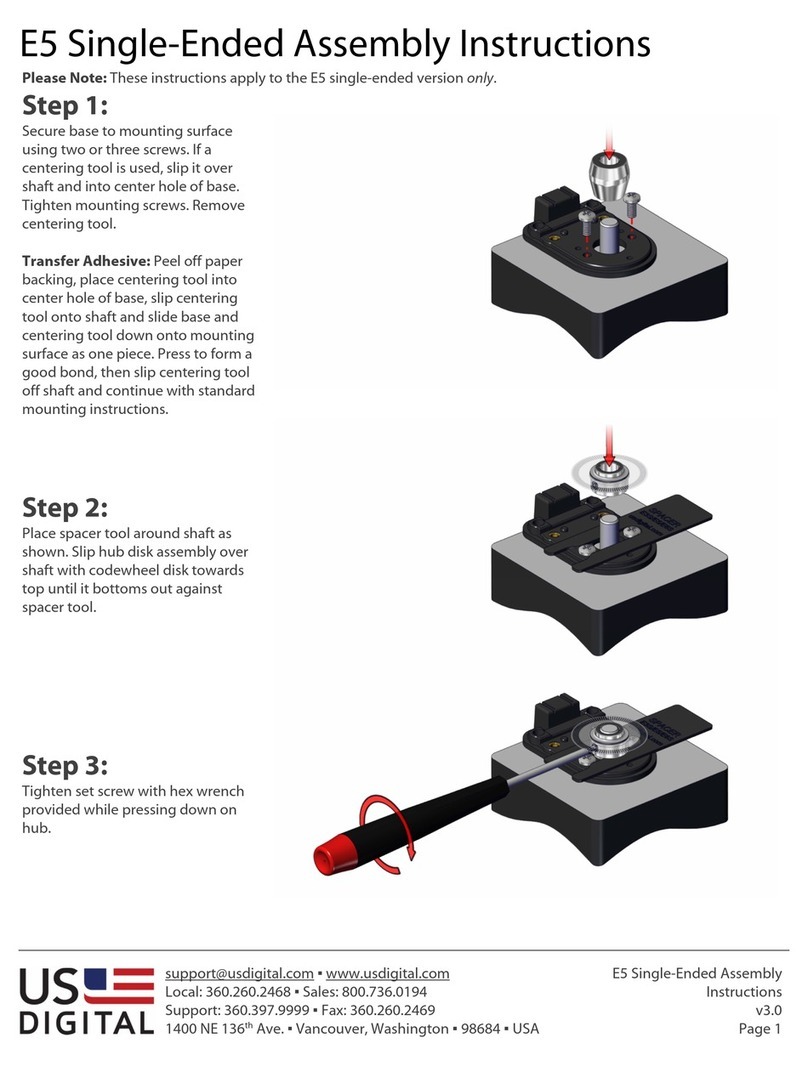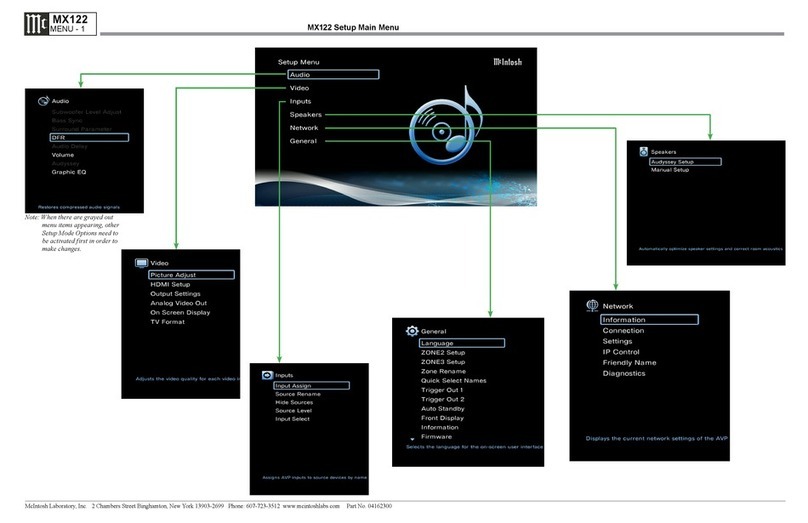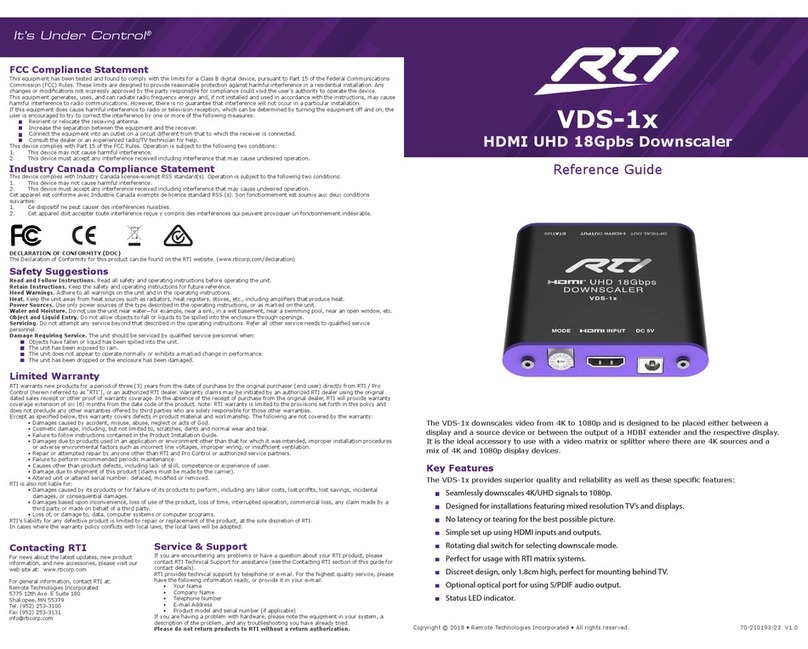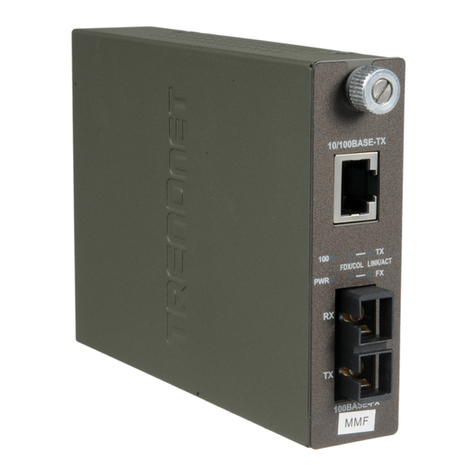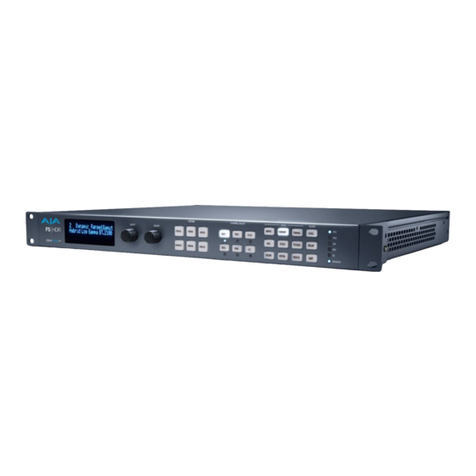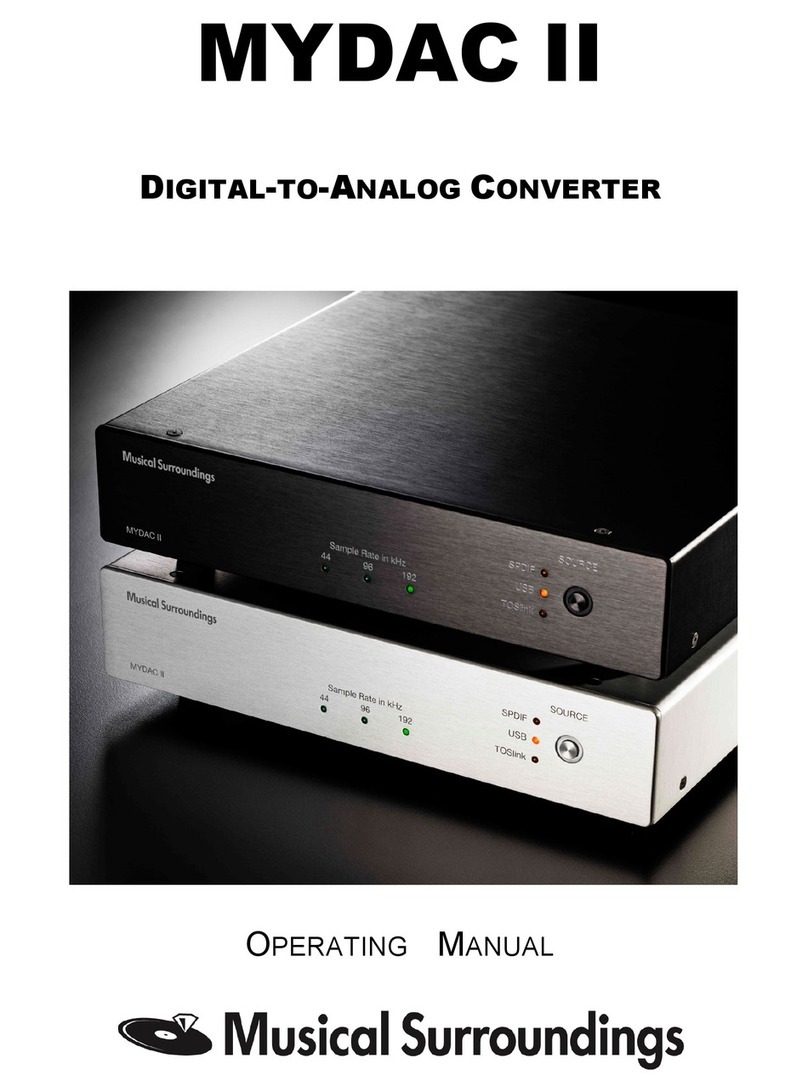ATX DVIS User manual

INSTALLATION & OPERATION MANUAL
DVIS/DVISm - Digital Video Insertion System
& Mini Digital Video Insertion System
www.atxnetworks.com
www.atx.com
Patent Pending
Patent Pending
DVISm
DVIS

General Guide Notes
Manual Release Date: July 16 2018
Firmware Version
Some features described in this manual require the latest rmware to be installed on the DVIS Device platform. Check with
ATX Networks technical support or the related support web site for your model for the latest release of rmware. The rmware
version installed may be found on the ‘Maintenance’ tab of the GUI. At the time of publication of this manual the most current
released rmware version is:
System 4.23-3.21-10.56
GUI 6.0.4.6
DV1HDA Card 1.3.0
DVGIGE Card 7.15-0.0
Organization of This Manual
This manual is generally organized based on the tabbed GUI with an individual chapter dedicated to describing the
con gurable features of each tab. Further chapters outline activities related to the DVIS Device operation such as installation,
troubleshooting, etc.
FYI: In this guide, reference to DVIS infers DVIS and DVISm unless the model is speci cally
stated.
Cross Reference Hyperlink Usage
Hyperlinks are used liberally throughout the guide to assist the reader in nding related information if the reader is viewing the
Adobe PDF le directly. Hyperlinks may be identi ed by their blue text. Most links are to related pages within the document,
but some reference outside documents if the reader needs that additional information. The Table of Contents is entirely
hyperlinked and bookmarks are available but the bookmark feature must be turned on in your Reader application.
Symbol Usage
Throughout the manual, some symbols are used to call the readers attention to an important point. The following symbols are
in use:
WARNING: This symbol usage will call the reader’s attention to an important operation feature of
the equipment which may be safety related or an operation that may cause a service outage.
NOTE: This symbol indicates that there is helpful related information available in this note or
elsewhere in the guide.
MDU Solutions®&DigiVu® are registered trademarks of ATX in the United States and/or other countries. Products or features contained herein may be covered by one
or more U.S. or foreign patents. DVB®, Windows® ,Adobe® Reader® and other non-ATX product and company names in this manual are the property of their respective
companies.
Although every effort has been taken to ensure the accuracy of this document it may be necessary, without notice, to make amendments or correct omissions.
Speci cations subject to change without notice.

MDU Solutions® – DVIS/DVISm - Digital Video Insertion System & Mini Digital Video Insertion System - Installation & Operation Guide iii
ATX Condential & Proprietary
TABLE OF CONTENTS
GENERAL GUIDE NOTES ....................................................II
1. SAFETY INSTRUCTIONS ............................................... 1-1
1.1 General Safety Instructions ......................................... 1-1
1.2 Laser Safety ..................................................... 1-2
1.3 Laser Warning Labels ............................................. 1-2
2. SYSTEM DESCRIPTION ................................................ 2-1
2.1 Chapter Contents ................................................. 2-1
2.2 Models Covered by this Guide ....................................... 2-1
2.3 The Digital Audio/Video Insertion System (DVIS) ......................... 2-2
2.4 Key Features .................................................... 2-2
2.5 Simplied Block Diagrams .......................................... 2-4
2.6 Available Encoder Cards ........................................... 2-5
2.7 Available Input/Output Cards ........................................ 2-6
3. FIELD APPLICATIONS.................................................. 3-1
3.1 Chapter Contents ................................................. 3-1
3.2 Analog Channel Insertion vs Digital Channel Insertion . . . . . . . . . . . . . . . . . . . . 3-1
3.3 RF QAM Insertion ................................................. 3-2
3.4 IP Video Insertion Application ....................................... 3-4
4. INSTALLATION........................................................ 4-1
4.1 Chapter Contents ................................................. 4-1
4.2 Recommended Installation Environment ............................... 4-1
4.3 Equipment Safety Grounding ........................................ 4-1
4.4 RF Cable Sheath Grounding ........................................ 4-2
4.5 Mounting ........................................................ 4-2
4.6 Environment Considerations. . . . . . . . . . . . . . . . . . . . . . . . . . . . . . . . . . . . . . . . . 4-3
4.7 Provisioning Electrical Power ........................................ 4-4
4.8 RF Cabling ...................................................... 4-5
4.9 Audio & Video Connections ......................................... 4-6
4.10 Ethernet Network ................................................. 4-7
4.11 Installing Modules ................................................. 4-8
4.12 Cable Management Bar ............................................ 4-8
5. THE MANAGEMENT GUI................................................ 5-1
5.1 Chapter Contents ................................................. 5-1
5.2 Conguration Pages ............................................... 5-2
5.3 Minimum Computer Requirements .................................... 5-2
5.4 Connecting to the Management Computer .............................. 5-2
5.5 Connecting to the GUI Using IPv4 .................................... 5-3
5.6 Setup IPv6 Address ............................................... 5-4
5.7 Connecting to a Local Cable Modem .................................. 5-4
5.8 Resetting the Username and Password ................................ 5-6

iv MDU Solutions® – DVIS/DVISm - Digital Video Insertion System & Mini Digital Video Insertion System - Installation & Operation Guide
ATX Condential & Proprietary
6. ENCODER SETTINGS .................................................. 6-1
6.1 Chapter Contents ................................................. 6-1
6.2 SD Encoder Cards ................................................ 6-2
6.3 HD Encoder Cards ................................................ 6-2
6.4 Input & Output Cards .............................................. 6-3
6.5 Port Numbering Convention ......................................... 6-3
6.6 Encoder Conguration Quick Guide ................................... 6-4
6.7 Encoder Setting Section ............................................ 6-5
6.8 Input Parameters Section ........................................... 6-6
6.9 Output Parameters Section ......................................... 6-6
6.10 Program Identication .............................................. 6-8
6.11 Platform Control Buttons. . . . . . . . . . . . . . . . . . . . . . . . . . . . . . . . . . . . . . . . . . . . 6-9
7. MUX TAB - CONFIGURATION ............................................ 7-1
7.1 Chapter Contents ................................................. 7-1
7.2 Mux Settings ..................................................... 7-1
7.3 Legacy STB Settings .............................................. 7-2
7.4 DVB® SI Settings ................................................. 7-2
7.5 Platform Control Buttons. . . . . . . . . . . . . . . . . . . . . . . . . . . . . . . . . . . . . . . . . . . . 7-3
8. RF OUTPUT .......................................................... 8-1
8.1 RF Output Settings ................................................ 8-1
8.2 Platform Controls ................................................. 8-2
9. MAINTENANCE ....................................................... 9-1
9.1 Chapter Contents ................................................. 9-1
9.2 DVIS Information ................................................. 9-2
9.3 DVIS Hardware Status ............................................. 9-2
9.4 SNMP Settings ................................................... 9-2
9.5 Remote Update Server: ............................................ 9-3
9.6 Import Settings ................................................... 9-3
9.7 Network Settings .................................................. 9-5
9.8 IPv6 Network Settings ............................................. 9-7
9.9 TACACS+ Settings ................................................ 9-8
9.10 Network Control Buttons ............................................ 9-8
10. DEMOD & MUX SETTINGS ............................................. 10-1
10.1 Chapter Contents ................................................ 10-1
10.2 Quick Guide to Demod & Mux Conguration ........................... 10-1
10.3 Demod & Mux Settings ............................................ 10-4
10.4 Demodulator Settings ............................................. 10-4
10.5 Add & Drop Settings Buttons ...................................... 10-6
10.6 Add/Drop Programs ............................................ 10-7
10.7 PID Display Tree ................................................. 10-7
11. RF BYPASS OPERATION .............................................. 11-1
11.1 RF Bypass Operation ..............................................11-1
11.2 Power-up/Power Restoration ........................................11-1
11.3 Front Panel Indicators. . . . . . . . . . . . . . . . . . . . . . . . . . . . . . . . . . . . . . . . . . . . . .11-2

MDU Solutions® – DVIS/DVISm - Digital Video Insertion System & Mini Digital Video Insertion System - Installation & Operation Guide v
ATX Condential & Proprietary
12. IP OUTPUT .......................................................... 12-1
12.1 Chapter Contents ................................................ 12-1
12.2 Enabling the IP Output Tab ........................................ 12-2
12.3 Support for VLAN Tagging ......................................... 12-3
12.4 Gigabit Ethernet Card Fundamentals ................................. 12-3
12.5 Quick Guide to the Gigabit Ethernet Card ............................. 12-3
12.6 IP Output Conguration ........................................... 12-4
12.7 Source IP Settings ............................................... 12-4
12.8 Destination IP Settings ............................................ 12-5
12.9 Protocol Settings. . . . . . . . . . . . . . . . . . . . . . . . . . . . . . . . . . . . . . . . . . . . . . . . . 12-5
12.10 VLAN Settings ................................................. 12-6
12.11 GbE Port Numbering ............................................. 12-6
12.12 Two VLANs Automatically Created ................................... 12-7
12.13 Stream Settings ................................................. 12-8
12.14 Platform Control Buttons. . . . . . . . . . . . . . . . . . . . . . . . . . . . . . . . . . . . . . . . . . . 12-9
13. FIRMWARE UPDATE & RECOVERY...................................... 13-1
13.1 Chapter Contents ................................................ 13-1
13.2 Types of Firmware Files ........................................... 13-1
13.3 Identifying Current Firmware Version ................................. 13-2
13.4 Exporting a Conguration ......................................... 13-2
13.5 Where to Obtain Firmware Files ..................................... 13-2
13.6 Firmware Upgrade Process ........................................ 13-3
13.7 System Recovery Process ......................................... 13-5
13.8 Restore a Conguration Export ..................................... 13-7
13.9 Username & Password Reset Process. . . . . . . . . . . . . . . . . . . . . . . . . . . . . . . . 13-8
14. MODULE FIELD REPLACEMENT ........................................ 14-1
14.1 Field Replacement of CMOS Battery ................................. 14-1
14.2 Field Replacement of Cooling Fans .................................. 14-1
14.3 Field Replacement of Channel Deletion Filter .......................... 14-1
14.4 Field Replacement of Modules ...................................... 14-2
14.5 Field Replacement of Power Supply. . . . . . . . . . . . . . . . . . . . . . . . . . . . . . . . . . 14-4
15. TROUBLESHOOTING ................................................. 15-1
15.1 Error Codes .................................................... 15-1
16. SERVICE & SUPPORT................................................. 16-1
16.1 Contact ATX Networks ............................................ 16-1
16.2 Warranty Information ............................................. 16-1

vi MDU Solutions® – DVIS/DVISm - Digital Video Insertion System & Mini Digital Video Insertion System - Installation & Operation Guide
ATX Condential & Proprietary
This page intentionally left blank

CHAPTER 2: SAFETY INSTRUCTIONS
MDU Solutions® – DVIS/DVISm - Digital Video Insertion System & Mini Digital Video Insertion System - Installation & Operation Manual 1-1
ATX Condential & Proprietary
SAFETY INSTRUCTIONS
1. Safety Instructions
WARNING! FAILURE TO FOLLOW THE SAFETY PRECAUTIONS LISTED BELOW MAY RESULT IN PROPERTY DAMAGE
OR PERSONAL INJURY. PLEASE READ AND COMPLY WITH THE FOLLOWING:
1.1 General Safety Instructions
SAFETY GROUND: The connection to earth of the supplementary grounding conductor shall be in compliance with the
appropriate rules for terminating bonding jumpers in Part V of Article 250 of the National Electrical Code, ANSI/NFPA 70, and
Section 10 of Part I of the Canadian Electrical Code, Part I, CSA C22.1.
WATER AND MOISTURE: Care should be taken to prevent entry of splashed or dripping water, other liquids, and physical
objects through enclosure openings.
DAMAGE: Do not operate the device if damage to any components is suspected.
POWER SOURCES: Only connect the unit to a power supply of the type and capacity specied in the operating instructions
or as marked on the device.
NOTE: (a) For 115 VAC operation, use the power cord supplied for operation from a 115 VAC source.
(b) For 230 VAC operation, use the power cord supplied for operation from a 230 VAC source.
GROUNDING OR POLARIZATION: Electrical grounding and polarization means must not be defeated.
POWER CORD PROTECTION: Route power supply cord to prevent damage by external objects. Pay particular attention to
the exit point from the device and plug.
FUSING: This device is equipped with a fused receptacle, replace the fuse only with the same type. Refer to replacement
text on the unit for correct fuse type. It is recommended that the duplex wall receptacle be current limited to 15 A maximum.
NOTE: (a) Replace fuse in units operating on 115 VAC supply by fuse rated 3.0 A, 250 V, slo blo.
(b) Replace fuse in units operating on 230 VAC supply by fuse rated 1.5 A, 250 V, slo blo.
CAUTION:
For continued protection against the risk of re, replace only with the same type and rating of fuse.
POWER SUPPLY REMOVAL: Disconnect power (AC or DC) from the equipment before removing it for replacement or
service. This is accomplished by unplugging the power cord from the power outlet.
BATTERY REMOVAL AND REPLACEMENT: Replace the battery with Panasonic or Sony Part No. CR2032 or exact
replacement only.
CAUTION: Use of a different battery type may present a risk of re or explosion.
BATTERY DISPOSAL: Recycle or dispose of batteries in accordance with the battery manufacturer’s instructions and local/
national disposal and recycling regulations. Please call 1-800-8-BATTERY or go to the website at www.call2recycle.org for
information on recycling or disposing of your used battery.
SERVICE: Do not attempt to service the device beyond procedures provided the operating instructions. All other servicing
should be referred to qualied service personnel.
MODIFICATIONS: Modications should not be made to the device or any of its components for applications other than those
specied in the operating instructions.
SAFETY CODES AND REGULATIONS: The device should be installed and operated in compliance with all applicable local
safety by-laws, codes and regulations.
POWER SUPPLY CORD PROTECTION: Care must be taken during installation to route or arrange the power supply cord
to prevent and avoid the possibility of damage to the cord.

CHAPTER 2: SAFETY INSTRUCTIONS
1-2 MDU Solutions® – DVIS/DVISm - Digital Video Insertion System & Mini Digital Video Insertion System - Installation & Operation Manual
ATX Con dential & Proprietary
POWER SUPPLY CORD ROUTING: The power supply cord shall not be attached to the building surface, nor run through
walls, ceilings, oors and similar openings in the building structure.
EQUIPMENT NOTICE: Use in Norway and Sweden:
Equipment connected to the protective earthing of the building installation through the mains connection or through other
equipment with a connection to protective earthing - and to a cable distribution system using coaxial cable, may in some
circumstances create a re hazard. Connection to a cable distribution system has therefore to be provided through a device
providing electrical isolation below a certain frequency range (galvanic isolator, per EN 60728-11: a galvanic isolator shall
provide electrical insulation below 5 MHz. The insulation shall withstand a dielectric strength of 1,5 kV r.m.s., 50 Hz or 60
Hz, for 1 min.).
Utrustning som är kopplad till skyddsjord via jordat vägguttag och/eller via annan utrustning och samtidigt är kopplad till
kabel-TV nät kan i vissa fall medfõra risk fõr brand. Fõr att undvika detta skall vid anslutning av utrustningen till kabel-TV
nät galvanisk isolator nnas mellan utrustningen och kabel-TV nätet.
1.2 Laser Safety
This equipment may contain or be connected to an infrared laser source that transmits intensity-modulated light and emits
invisible radiation.
WARNING: Avoid Personal Injury. The laser light source on this equipment or the ber cables
connected to this equipment emit invisible laser radiation. Avoid direct exposure to the laser light
source.
WARNING: Viewing the laser output (if a transmitter) or ber cable with optical instruments may
pose an eye hazard.
WARNING:This equipment may only be installed, operated and serviced by authorized personnel
trained in the safe handling and operation of ber optic cables and laser sources.
• Do not apply power to this equipment if the ber is unmated or unterminated.
• Do not look into an activated ber with optical instruments such as magni ers, or microscopes.
1.3 Laser Warning Labels
This equipment may contain or be connected to other equipment containing Class 1M laser sources. The following labels
adhered to each product will indicate the type of laser source utilized along with general laser radiation labels.

CHAPTER 2: SYSTEM DESCRIPTION
MDU Solutions® – DVIS/DVISm - Digital Video Insertion System & Mini Digital Video Insertion System - Installation & Operation Manual 2-1
ATX Con dential & Proprietary
SYSTEM DESCRIPTION
2. System Description
DVIS series products are cost effective and space ef cient encoding, multiplexing and transmission platforms ideal for local
digital channel insertion applications. Several SD/HD baseband programs can be directly encoded/multiplexed and output in
QAM or IP format, eliminating the need for combining several units for multiple program encoding. Models exist with two and
ve card slots, accepting various combinations of available cards. HTTP based GUI allows easy set-up and control without the
need for proprietary software installation. Remote access and SNMP monitoring are available via integrated RJ45 Ethernet
interface.
In this chapter we introduce the key features and describe the attributes that make the DVIS Device a powerful addition to any
digital cable TV network.
2.1 Chapter Contents
• “Models Covered by this Guide”
• “The Digital Audio/Video Insertion System (DVIS)”
• “Key Features”
• “Simpli ed Block Diagrams”
• “Available Encoder Cards”
• “Available Input/Output Cards”
2.2 Models Covered by this Guide
There are two models in the series; both have QAM output by default, but each has different channel capacity.
FYI: In this guide, reference to DVIS infers DVIS and DVISm unless the model is speci cally
stated.
2.2.1 DVIS
This model has up to 10 channels of SD MPEG-2 encoding or 5
channels of HD/SD MPEG-2/H.264. The output is a single QAM.
GbE IP output is available but number of encoded channels is
reduced for IP output, as one card slot is used for the IP output
card. This is a popular model in applications where up to 10SD/5HD
channels of cost effective video are required in commercial sites
such as MDUs, stadiums, hospitals and other health care facilities
where in-house educational channels are implemented.
Distinguishing Features:
• 5 card slots for encoders or I/O cards. (Not all slots can be
used for all card types.)
• Up to 10 integrated SD MPEG-2 encoded programs using
dual encoder cards.
• Up to 5 integrated SD/HD MPEG-2/H.264 encoded programs.
Figure 2-1: DVIS

CHAPTER 2: SYSTEM DESCRIPTION
2-2 MDU Solutions® – DVIS/DVISm - Digital Video Insertion System & Mini Digital Video Insertion System - Installation & Operation Manual
ATX Con dential & Proprietary
2.2.2 DVISm
This is the Mini model with up to 4 channels of HD/SD MPEG-2/H.264.
The output is single QAM. GbE IP output is available but the number
of encoded channels is reduced for IP output, as one card slot is used
for the IP output card. This is a popular model in applications where
up to 4SD/2HD channels are required in commercial sites such as
MDUs, stadiums, hospitals and other health care facilities where in-
house educational channels are implemented.
Distinguishing Features:
• 2 card slots for encoders or I/O cards.
• Up to 4 integrated SD MPEG-2 encoded programs using
dual encoder cards.
• Up to 2 integrated SD/HD MPEG-2/H.264 programs encoded.
2.3 The Digital Audio/Video Insertion System (DVIS)
DVIS Device series products are network-edge local content encoding devices for digital video networks. They encode local
baseband analog content into a digital format within a property provisioned with IP or QAM digital only TVs, STBs or DTAs
where analog spectrum is not available or where digital content is needed in addition to analog content.
Target applications include:
• Cost-effective encoding, multiplexing & transmission (QAM and/or IP).
• Digital simulcast or digital delivery of PEG (Public, Educational, Government).
• Hub site speci c programming.
• Security or surveillance camera feeds (MDUs, retirement homes).
• Text/character generator or local information channel (hotels, conference centers, gated communities).
• Distribution of ‘in-house’ or private channels throughout a property (e.g., sports stadiums, network studios).
All deployments of digital signals in a modern cable TV system are presented with challenges which did not exist in the former
analog deployments. Speci c challenges are faced when MDUs and institutions within the cable plant require locally inserted
content which must be received by the installed base of cable TV set top boxes (STB). The DVIS Device can be used in these
properties to encode local analog video cameras, message boards, instructional and advertising channels into HD/SD MPEG-
2/H.264 streams. The resulting stream content may be inserted into a blank EIA channel or may perform digital drop and insert
into pre-existing clear or encrypted QAM carriers. The exible architecture of the product makes it an ideal candidate for any
number of programs that an MDU or similar property is likely to require.
2.4 Key Features
2.4.1 Flexible Digital Program Insertion
Designed for deployment in both RF and IP environments, the DVIS system is capable of inserting digital programs into an
EIA RF channel where there is no pre-existing carrier or it may be used with an integrated channel deletion lter and any EIA
channel may be effectively removed making way for a new QAM created by the DVIS Device. The integrated QAM modulator
may be set to any frequency between 54 and 870 MHz (extended range 15 - 975 MHz with some restrictions) in 1 kHz steps
and fully supports STD, IRC and HRC channel plans. For IP distribution/insertion installations, Ethernet transport streams may
be created as either unicast or multicast, MPTS/SPTS with any address within the valid IPv4 address and port range.
2.4.2 Support for SD/HD MPEG-2/H.264 Encoding
The DVIS and DVISm platforms accommodate plug-in SD or HD video encoders, including an HD encoder with HDMI input.
Single channel HD plug-in cards and single and dual channel SD encoder cards are available to encode with MPEG-2 or
H.264 pro les. Both SD and HD programs may be mixed on any output multiplex (IP or QAM).
2.4.3 Gigabit Ethernet Output
The DVIS systems may be provisioned with an optional gigabit Ethernet output card. The Ethernet card has 2 electrical
Ethernet ports (RJ45) as well as 2 SFP ports into which may be installed singlemode or multimode ber optic SFPs for reliable
trunk connection to distribution switches. A variety of SFP interface types such as single mode and multimode ber are
supported and may be installed as required by system architecture. The Ethernet output may be provisioned to be the sole
output of the unit or simultaneous RF and Ethernet are supported. IP output streams may be provisioned with VLAN tagging
and Pro-MPEG FEC. If con gured with IP output only(RF Disabled), then the IP programs may be all SPTS streams.
Figure 2-2: DVISm

CHAPTER 2: SYSTEM DESCRIPTION
MDU Solutions® – DVIS/DVISm - Digital Video Insertion System & Mini Digital Video Insertion System - Installation & Operation Manual 2-3
ATX Con dential & Proprietary
2.4.4 Fiber Optic Output
Installation of this available module adds ber output capabilities to the DVIS platforms allowing insertion of forward path
channels directly into RFoG and FTTH networks. With +10dBm optical output power, SC/APC interface and available for ITU
channels 16 thru 46 this optional module upgrades DVIS to the latest distribution technology.
2.4.5 Integrated Add/Drop Multiplexing
Both DVIS platforms have integral transport stream multiplexers which creates a new QAM or IP multiplex or alternately may
be used in a QAM add/drop application along with an optional plug-in demodulator card to insert programs into an existing
QAM, clear or encrypted, replacing only the programs that are desired. If the program that is dropped was encrypted, the
replacement program stream will be in the clear. The add/drop application utilizes the QAM demodulator to analyze the MPEG
stream and selectively insert or “drop and insert” local programs in a exible manner.
2.4.6 Remote Monitoring Via SNMP
The product fully supports Simple Network Management Protocol (SNMP) which allows the monitoring of the built in alarm
points by a remote SNMP management console. The available DVIS Device MIB may be compiled into the remote Management
Console to provide noti cation of the triggering of alarms either across a private network or the internet if available. Upon
triggering of a prede ned alarm, a trap is automatically sent by the equipment to a listening SNMP management console.
2.4.7 Flexible Transport Stream Re-Multiplexing
Flexibility is provided in con guring the re-multiplexed transport stream in an add/drop application. The inserted program may
be assigned any valid PID or MPEG program number and the encoder may be set to any of a wide range of valid CBR video
and audio encoding rates. A built in MPEG-2 stream analyzer (demodulator card required for this feature) for incoming MPEG
programs assists in making the correct selections for replacing programs easy and intuitive. MPEG tables PAT and PMT along
with all PID values are automatically generated to ensure that downstream STB can reliably tune the inserted multiplex and
minimum craft experience is required to implement a system. Dynamic PID monitoring avoids outages due to program table
updates.
2.4.8 Scalable Architecture is Field Upgradable
Encoder cards which accommodate one or two channels of SD MPEG-2 or one channel of HD/SD MPEG-2/H.264 encoding
may be installed as required so the system may be grown as needs grow. Hot swappable cards make upgrading the DVIS
encoder capability faster while keeping outages to a minimum. The RF Demodulator card may be installed in any available
slot as future requirements dictate even if the initial installation did not originally include it. IP output capabilities may also be
added when required by installing a Gigabit Ethernet card in slot 2 (DVISm) or 5 (DVIS).
2.4.9 Mass Deployment and Backup with Con guration Export
The DVIS platforms allow the operator to export the programmed con guration as a le. The exported le may be used for
backup and archive purposes or to allow fast and easy deployment of multiple DVIS units with similar con guration thus saving
the time to manually program each unit before deployment.
NOTE: Care has to be taken not to overwrite the existing DVIS Device IP address when loading
exported settings to remote units. This is avoided with factory default settings but may happen with
user con gured settings.
2.4.10 IPv4 and IPv6 Support
With the latest available rmware installed, all DVIS platforms support legacy IPv4 and IPv6 IP addressing to allow access
from private networks or from across the internet.
2.4.11 TACACS+ Authentication
For security against internet intrusion, the DVIS Device forces assignment of a username and password which may be
changed at any time. However, for added security and easier user management, TACACS+ support may be enabled
2.4.12 Optional Channel Deletion Filter
In applications where all cable plant channels have pre-existing QAM carriers, the units may be con gured with an optional
channel deletion lter which allows the removal of any EIA channel and all of it’s RF content with minimal adjacent channel
affect, allowing a new QAM channel to be inserted.
2.4.13 Powerful GUI
Management and con guration of the DVIS system is through a built-in web server which presents the con guration pages in

CHAPTER 2: SYSTEM DESCRIPTION
2-4 MDU Solutions® – DVIS/DVISm - Digital Video Insertion System & Mini Digital Video Insertion System - Installation & Operation Manual
ATX Condential & Proprietary
an intuitive tabbed format. Access to the GUI may be congured to allow remotely connecting across any private network or
over the Internet if a connection is made available, usually with a DOCSIS Cable Modem.
2.4.14 MDU Application Secure Enclosure
The DVIS platform is constructed in a durable and lockable enclosure designed for the typical MDU wall mount installation
environment. Integral cooling fans allow the equipment to be installed and operate in a wide range of uncontrolled environmental
conditions where room cooling is not available. All controls and modules are securely inside the cabinet and there is room
inside the cabinet for most cable modems to be securely installed where remote management is required.
2.4.15 Integrated RF Management
Integrated RF management is an engineered feature provided with the DVIS series simplifying deployment with a minimum
of time and craft. All combiners and splitting required for all functionality are internally congured and clearly labeled and
accessible.
2.4.16 Automatic RF Bypass in Power Outage
The DVIS Device has been thoughtfully provided with an RF bypass feature. A power outage to the equipment causes the
internal RF bypass switches to activate and restore the original cable system QAM channel to the affected premises. This
prevents customers receiving a blank channel during outages.
2.5 Simplied Block Diagrams
DVIS
INPUT
VOLTAGE
120 VAC
230 VAC
CURRENT
RATING
2.4A
1.2A
FREQ 50/60Hz
RF IN
RF IN
TEST
-10 dB -20 dB
QAM CHANNEL DELETION
FILTER - DVISCD*
(OPTIONAL)
RF OUT
RF OUT
TEST
-20 dB -20 dB
QAM
DEMODULATOR
TO
DEMODULATOR
(PATCH CABLE)
VIDEO IN
PLUG-IN CARDS
FAN
POWER
SUPPLY
RJ-45
INTERFACE
LAPTOP
PC
90-264 VAC
L/R AUDIO IN
VIDEO IN
L/R AUDIO IN
VIDEO IN
L/R AUDIO IN
VIDEO IN
L/R AUDIO IN
DEMODULATOR CARD
ENCODER CARDS
RF SWITCH RF SWITCH
-20 dB
FAN
RF
DETECTOR
RF SWITCH
(PATCH CABLE)
-20 dB
TO
CABLE MODEM
RESET
REBOOT
MODULATOR
OUTPUT
TO
COMBINING
1 OR 2-CHANNEL
ENCODER
1 OR 2-CHANNEL
ENCODER
TS MULTIPLEXER QAM MODULATOR
RF-UPCONVERTER
MONITOR
&
CONTROL
I.T.E.
E325862
40RH
ON/OFF
I I
'
I I
'
CONV.
OUTLETS
Figure 2-3: Simplied Block Diagram - DVIS
DVISm
INPUT
VOLTAGE
120 VAC
230 VAC
CURRENT
RATING
2.4A
1.2A
FREQ 50/60Hz
RF IN
RF IN
TEST
-10 dB -20 dB
QAM CHANNEL DELETION
FILTER - DVISMCD*
(OPTIONAL)
RF OUT
RF OUT
TEST
-20 dB -20 dB
QAM
DEMODULATOR
TO
DEMODULATOR
(PATCH CABLE)
VIDEO IN
PLUG-IN CARDS
FAN
POWER
SUPPLY
RJ-45
INTERFACE
LAPTOP
PC
90-264 VAC
L/R AUDIO IN
VIDEO IN
L/R AUDIO IN
VIDEO IN
L/R AUDIO IN
VIDEO IN
L/R AUDIO IN
ON/OFF SWITCH
DEMODULATOR CARD
ENCODER CARDS
RF SWITCH RF SWITCH
-20 dB
FAN
RF
DETECTOR
RF SWITCH
(PATCH CABLE)
-20 dB
TO
CABLE MODEM
RESET
REBOOT
MODULATOR
OUTPUT
TO
COMBINING
1 OR 2 CHANNEL
ENCODER
1 OR 2 CHANNEL
ENCODER
TS MULTIPLEXER QAM MODULATOR
RF-UPCONVERTER
MONITOR
&
CONTROL
I.T.E.
E325862
40RH
Figure 2-4: Simplied Block Diagram - DVISm

CHAPTER 2: SYSTEM DESCRIPTION
MDU Solutions® – DVIS/DVISm - Digital Video Insertion System & Mini Digital Video Insertion System - Installation & Operation Manual 2-5
ATX Con dential & Proprietary
2.6 Available Encoder Cards
2.6.1 DV1CE & DV1CEM
Single Channel SD Analog Input Encoder
2.6.2 DV2CE & DV2CEM
Dual Channel SD Analog Input Encoder
2.6.3 DV1HDA
Single Channel HD Component/VGA Input Encoder
2.6.4 DV1HDMI
Single Channel HD HDMI®Input Encoder
Figure 2-5: Analog SD Encoder
Figure 2-6: Dual Channel Analog SD Encoder
Figure 2-7: Component/VGA HD/SD Encoder
Figure 2-8: HDMI®HD Encoder

CHAPTER 2: SYSTEM DESCRIPTION
2-6 MDU Solutions® – DVIS/DVISm - Digital Video Insertion System & Mini Digital Video Insertion System - Installation & Operation Manual
ATX Condential & Proprietary
2.7 Available Input/Output Cards
2.7.1 DV2DA Dual Output Distribution Amplier
2.7.2 DVDMQMB QAM Modulator
2.7.3 DVGIGE Gigabit Ethernet Card
Figure 2-9: Dual Output A/V Distribution Amplier
Figure 2-10: QAM Demodulator
Figure 2-11: Gigabit Ethernet Output Card

CHAPTER 3: FIELD APPLICATIONS
MDU Solutions® – DVIS/DVISm - Digital Video Insertion System & Mini Digital Video Insertion System - Installation & Operation Manual 3-1
ATX Con dential & Proprietary
FIELD APPLICATIONS
3. Field Applications
In this chapter we illustrate some of the common eld applications for the DVIS systems. This listing is not exhaustive and
does not show every combination of channel or program encoding/insertion.
FYI: In this guide, reference to DVIS infers DVIS and DVISm unless the model is speci cally
stated.
3.1 Chapter Contents
• “Analog Channel Insertion vs Digital Channel Insertion”
• “RF QAM Insertion”
• “IP Video Insertion Application”
• “IP Insertion - Optical Transport”
• “Optical QAM Insertion Applications”
3.2 Analog Channel Insertion vs Digital Channel Insertion
In the past, in order to insert a local channel into an MDU, an entire cable channel would be deleted with a channel deletion
lter and the entire existing channel would be lost, Figure 3-1.
Old Way – Analog System
One Channel contains one Program
One channel is deleted
A new program is modulated and reinserted
All channels can be tuned by an Analog TV Tuner
1 PROGRAM 1 PROGRAM 1 PROGRAM
ANALOG CHANNEL ANALOG CHANNEL ANALOG CHANNEL
ANALOG TV
All original channels before
the Channel Deletion Filter
All original channels minus
one channel after the Channel
Deletion Filter
All original channels plus new
channels after the directional
coupler
1
PROGRAM
ANALOG
CHANNEL
1
PROGRAM
ANALOG
CHANNEL
1
PROGRAM
ANALOG
CHANNEL
1
PROGRAM
ANALOG
CHANNEL
1
PROGRAM
ANALOG
CHANNEL
DELETED
CHANNEL
1
PROGRAM
ANALOG
CHANNEL
1
PROGRAM
ANALOG
CHANNEL
ANALOG
CHANNEL
NEW
PROGRAM
CABLE TV IN
CHANNEL DELETION FILTER
CABLE TV OUT
DIRECTIONAL
COUPLER
NEW
PROGRAM
ANALOG
CHANNEL
MODULATOR
AUDIO
VIDEO
NEW
CHANNEL
SOURCE
MATERIAL
Figure 3-1: Analog Channel Insertion vs Digital Channel Insertion

CHAPTER 3: FIELD APPLICATIONS
3-2 MDU Solutions® – DVIS/DVISm - Digital Video Insertion System & Mini Digital Video Insertion System - Installation & Operation Manual
ATX Con dential & Proprietary
Now it is possible with the DVIS system to delete only a single program (or multiple programs) from an existing QAM channel
and replace that program with locally encoded content, see Figure 3-2. In this case the QAM channel is still deleted with a
channel deletion lter or it is possible to insert the QAM carrier into spectrum space left intentionally blank without the use of
a channel deletion lter.
3.3 RF QAM Insertion
The simplest con guration is to create a new QAM at the MDU them insert it into spectrum that contains no other channel. This
scenario dose not require any pre- ltering.
3.3.1 RF QAM Insertion Into Empty Channel
DVIS series products can be used to insert local programming into the cable system where there is empty spectrum (no
New Way – All Digital System
One Channel can typically contain up to 10 programs
One channel is deleted
Any number of programs within that channel can be “dropped”
One to Four new programs can be “added”, modulated and inserted
The new channel can only be tuned with a Digital Set-Top Box
DIGITAL CHANNEL DIGITAL CHANNEL DIGITAL CHANNEL
PROGRAMS
DIGITAL TV
SET-TOP
BOX
All original channels before
the Channel Deletion Filter
All original channels minus
one channel after the Channel
Deletion Filter
All original channels plus new
channel and added programs
after the directional coupler
DIGITAL
CHANNEL
DIGITAL
CHANNEL
DIGITAL
CHANNEL
DIGITAL CHANNEL
PROGRAMS
DIGITAL CHANNEL DIGITAL CHANNEL
DELETED CHANNEL
DIGITAL CHANNEL
NEW AND OLD
PROGRAMS
CABLE TV IN CABLE TV OUT
CHANNEL DELETION FILTER
MODULATOR
DIRECTIONAL
COUPLER
NEW AND OLD PROGRAMS
NEW AND OLD
PROGRAMS
MULTIPLEXER
DROPPED
PROGRAMS
ORIGINAL
PROGRAMS
DEMODULATOR
NEW
PROGRAM 1
NEW
PROGRAM 2
ENCODER
NEW
PROGRAMS
DVISm
DIGITAL
CHANNEL
Figure 3-2: QAM Program Drop & Insert
Figure 3-3: Insertion Into Blank Channel or at Band Edge

CHAPTER 3: FIELD APPLICATIONS
MDU Solutions® – DVIS/DVISm - Digital Video Insertion System & Mini Digital Video Insertion System - Installation & Operation Manual 3-3
ATX Con dential & Proprietary
QAM or analog channel), see Figure 3-3. This can be spectrum in the middle of other channels or above the HFC plant
end frequency (at the “band edge”). In these scenarios, a channel is allocated on the system where no carrier is sent from
the headend and every property in the system where the DVIS Device is installed may insert a QAM without the use of a
channel deletion lter. When RF spectrum is available for this application and/or there are a large number of insertion systems
installed, the cost of a channel deletion lter may be saved at every property.
3.3.2 RF QAM Insertion at Band Edge
There are two main scenarios for this deployment:
• Regular 870 MHz plant has some empty channels remaining unused just below 870 MHz. The new QAM channel is
inserted on one of these empty channels.
• Plant is built to 750 MHz so at least 100 MHz of plant is available with empty channels. The new QAM is inserted in
this upper band above the 750 MHz plant.
In each case, some extra loss may be incurred through passives that are near or past their usable bandwidth but in such a
case, only a very few passives are affecting the new QAM channel and the output may be increased slightly to compensate
if required, Figure 3-3.
3.3.3 RF QAM Insertion Into Deleted Channel
This application is intended for clear or encrypted QAM channels that have programming that is able to be sacri ced or for
QAM channels that are designed for this program insertion feature. Encrypted programs will be replaced with an ‘in the clear’
program. Using the optional channel deletion lter, the target channel may be effectively removed to make space for the
inserted channel. In this case, Figure 3-4, adjacent system channels are minimally affected through the “Brick Wall” channel
dropping lter technology.
The equipment can be used to insert local programming into an EIA channel where the cable system carries a channel but
providing customers with the programming on that channel is discretionary. In this scenario, a system EIA channel is deleted
using an optional channel deletion lter with very good adjacent channel performance and deep rejection of the intended
deletion channel. This lter is available from ATX Networks and is an integral part of the design of the units. In this case, they
will create a totally new QAM channel and insert it into the blank spectrum following the output of the lter.
Figure 3-4: Insertion into Locally Deleted QAM

CHAPTER 3: FIELD APPLICATIONS
3-4 MDU Solutions® – DVIS/DVISm - Digital Video Insertion System & Mini Digital Video Insertion System - Installation & Operation Manual
ATX Con dential & Proprietary
3.3.4 RF QAM Local Program Add/Drop
The DVIS system can be used to insert local programming into the actual data stream of a QAM by dropping speci c programs
from an existing QAM channel and replacing them with local content, Figure 3-5. This application requires an optional DEMOD
Card and Channel Deletion Filter. In this application, the original system EIA channel is ltered out and a new QAM channel
inserted in it’s place, however, before deletion the incoming QAM channel is demodulated and de-multiplexed. This allows
insertion of local content in a more granular manner, right at the program level. Any incoming programs may be selected to
be deleted, even an encrypted program, and in their place, SD or HD programs may be inserted. Replaced programs will be
‘in the clear’.This has the bene t of retaining programs in the QAM that must remain and using the deleted program space to
provide the local content to the property. Only content payload is manipulated (dropped/replaced/added). All other data/tables
from incoming QAM is passed through without any affect.
3.4 IP Video Insertion Application
3.4.1 IP Insertion - MDU
This application uses encoding capability with IP output to insert programming into an IPTV property for distribution, Figure 3-6.
The DVIS platform with GbE output card may be used to insert IP video content directly to a network switch for transmission
on the plant in a hotel or other hospitality environment or transported via Edge QAM and optical for remote delivery.
Figure 3-5: Local Add/Drop of Programs in a QAM
Figure 3-6: IP Insertion for an MDU

CHAPTER 3: FIELD APPLICATIONS
MDU Solutions® – DVIS/DVISm - Digital Video Insertion System & Mini Digital Video Insertion System - Installation & Operation Manual 3-5
ATX Con dential & Proprietary
3.4.2 IP Insertion - Optical Transport
This application uses encoding capability with IP output to insert programming into an IPTV network for distribution at a hub,
Figure 3-7. The DVIS platform with GbE output card may be used to insert IP video content directly to a network switch for
transmission on the plant in a hotel or other hospitality environment or transported via Edge QAM and optical for remote
delivery.
3.4.3 Local Content Back Haul Over IP
DVIS systems may be used for IP back haul where there is a source of video at a point in the plant such as a remote studio
or special program origination location and the video is needed at a hub for reinsertion into the plant. There are two main
applications as illustrated in Figure 3-8.
1. Fiber Back Haul
This provides guaranteed signal quality, link speed and bandwidth. In this case, a single mode SFP installed in the
GigE Module may be used to transport the IP stream on the ber.
2. DOCSIS Modem Back Haul
Not always possible to guarantee link speed and bandwidth which could vary, therefore encoded signal quality must
be lower due to lower upstream bandwidth. In this case a DOCSIS modem with high rate upload speed is used to
transmit the video over IP to the hub, where it is re-inserted.
Figure 3-7: IP Video Insertion to Optical Transport
IP Video Backhaul
STUDIO OUTSIDE PLANT HEADEND/HUB
IP VIDEO BACKHAUL
DVIS / DVISm
ENCODE / MUX / IP TRANSMISSION
TS
MULTIPLEXER
IP OUT
RJ45 10/100/1000
BaseT, SFP GigE
CHANNEL MPEG VIDEO ENCODERS
A/V
SOURCE
A/V
SOURCE
A/V
SOURCE
DOCSIS
MODEM
COPPER
SFP GigE
OPTICAL NODE
OPTICAL
RECEIVER
CMTS
SWITCH EQAM
EQAM
OPTICAL
TRANSMITTER
Figure 3-8: Local Content Back Haul over IP

CHAPTER 3: FIELD APPLICATIONS
3-6 MDU Solutions® – DVIS/DVISm - Digital Video Insertion System & Mini Digital Video Insertion System - Installation & Operation Manual
ATX Condential & Proprietary
This page intentionally left blank
This manual suits for next models
1
Table of contents
Other ATX Media Converter manuals
